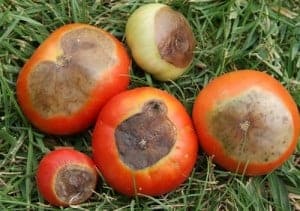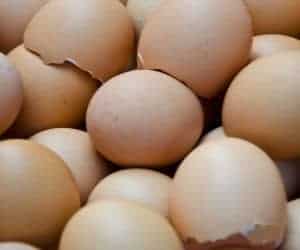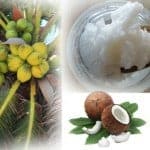Eggshells: From Trash to Treasure
Eggs are delicious! Not only do they taste good, but they are packed with nutrients such as calcium, vitamin D, phosphorous, vitamin B12, folate, selenium, and many more. Just as eggs are a tasty, nutrient-rich treat for us, eggshells are that for plants. They are an inexpensive source to fertilize your plants. It truly does hold true to the saying, “one man’s trash is another man’s treasure.”

Blossom End Rot Tomatoes
Eggshells add calcium to soil, which help plants build cell walls. Soil depleted of calcium can hinder plant growth, and often causes blossom end rot (a plant disease) in plants such as tomatoes, peppers, eggplants, and other susceptible plants. However, adding eggshells to the soil can help prevent this.
Little Prep:
Before you crush your eggshells, you want to make sure that they are free from bacteria.
Some like to wash the eggshells, and let them sit out to dry. Another little trick is to bake them on a cookie sheet at 150 F for 20–30 minutes or a little longer if they haven’t dried out yet. Your timing may be different, because ovens vary. You mainly want to make sure the eggshells are dried out. You can take them out once they are. This will dry and sterilize them at the same time.
Crush, Crush, Crush:
Some people like to put larger eggshell pieces in their indoor pots or around the base of their plants when gardening outdoors. Others like to crush them into smaller pieces, & some even grind them into a powdered form. You can crush them as much as you like. Keep this in mind: eggshells take time to break down in soil, so that the calcium is readily available to enrich your plants. The smaller the pieces, the sooner you’ll see the benefits.
Break It Down:
You can use vinegar to help speed up the process of the calcium becoming readily available.
Ingredients
1 teaspoon of pulverized eggshells (powdered form)
1–1 ¼ teaspoon of white distilled vinegar
Glass container (preferably)
Ph balance strips or drops (if you want to test the ph level before using it)
You can have a 1:1 (1 tsp eggshells to 1 tsp vinegar), but no more than a 1:2 (1 tsp eggshells to 2 tsp vinegar) ratio of eggshells to vinegar. Even though vinegar is acidic, this will neutralize it more so it doesn’t make your soil acidic. Let the combination sit in the container for a bit. Make sure you switch it around every now and then to help it mix together. You want to do this until you see it bubble up. Now your mix is ready to be poured in the soil. So crush away, plant, be patience, and enjoy your harvest in due time!
The next time that you cook some scrambled eggs or any other egg dish, remember to save those eggshells. This is an excellent way to get multiple usages out of something that’s good for you and other things too.
Happy Gardening!
Resources:
http://ruralspin.com/2013/04/07/7-ways-to-use-eggshells-and-tips-you-need-to-know
http://www.mamashealth.com/garden/eggshells.asp
http://homeguides.sfgate.com/plants-would-benefit-crushed-eggshells-40104.html
http://www.growveg.com/growblogpost.aspx?id=328
http://www.gardeningknowhow.com/composting/ingredients/eggshells-in-the-garden.htm
https://mygreenspace.nparks.gov.sg/get-cracking-with-eggshells-in-your-garden/




